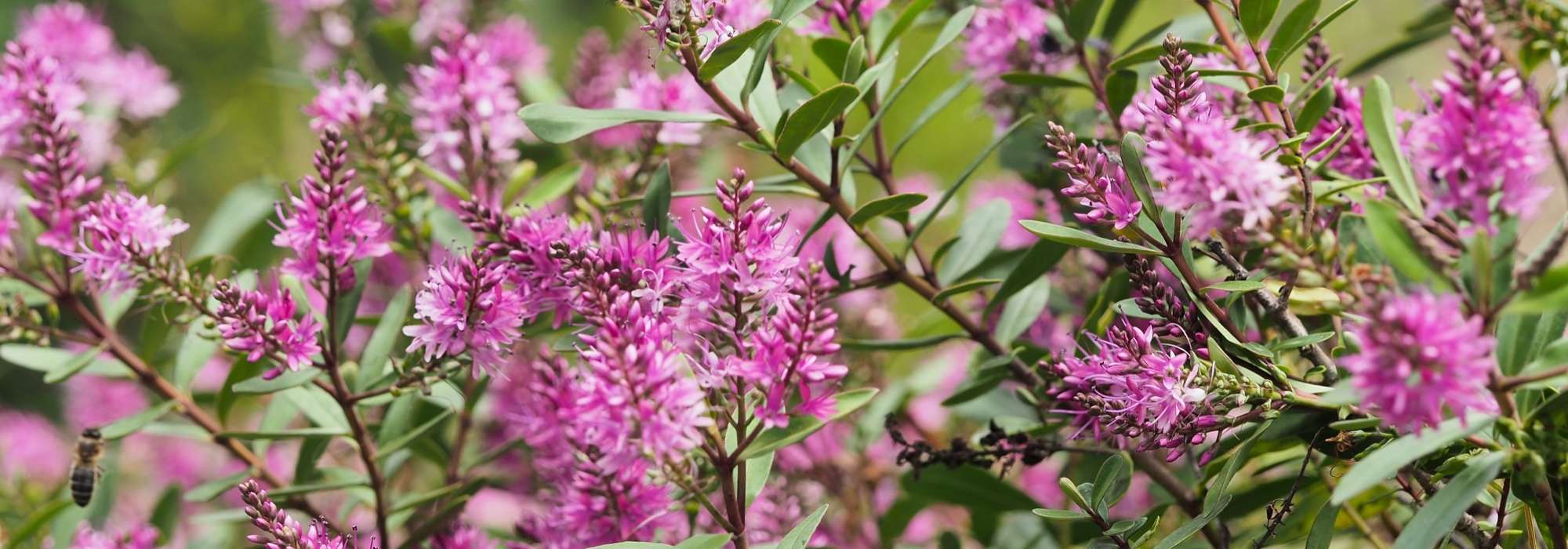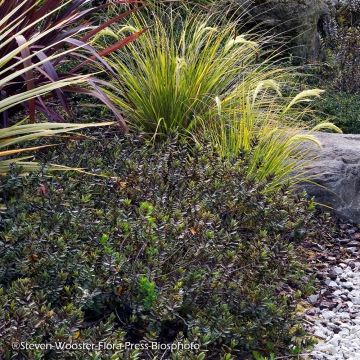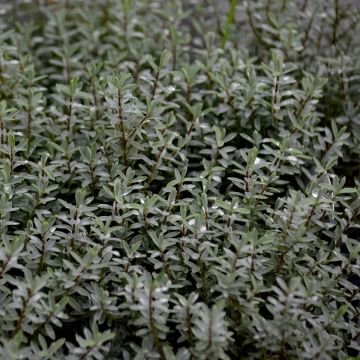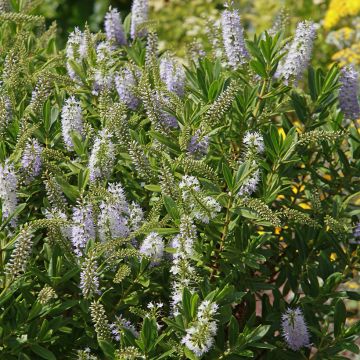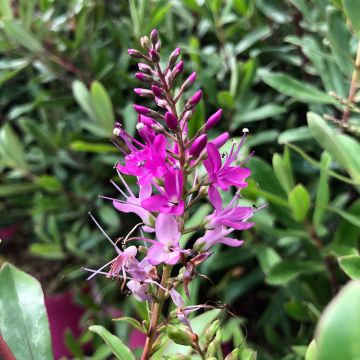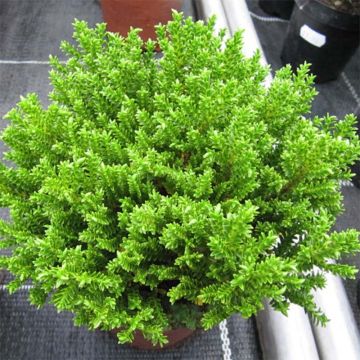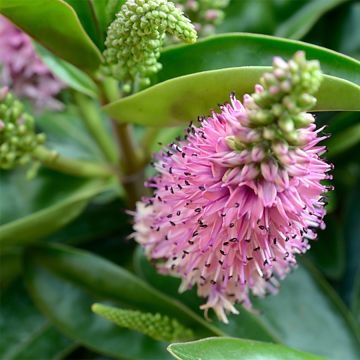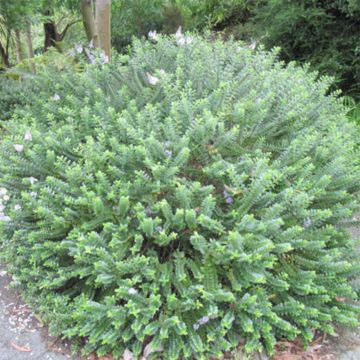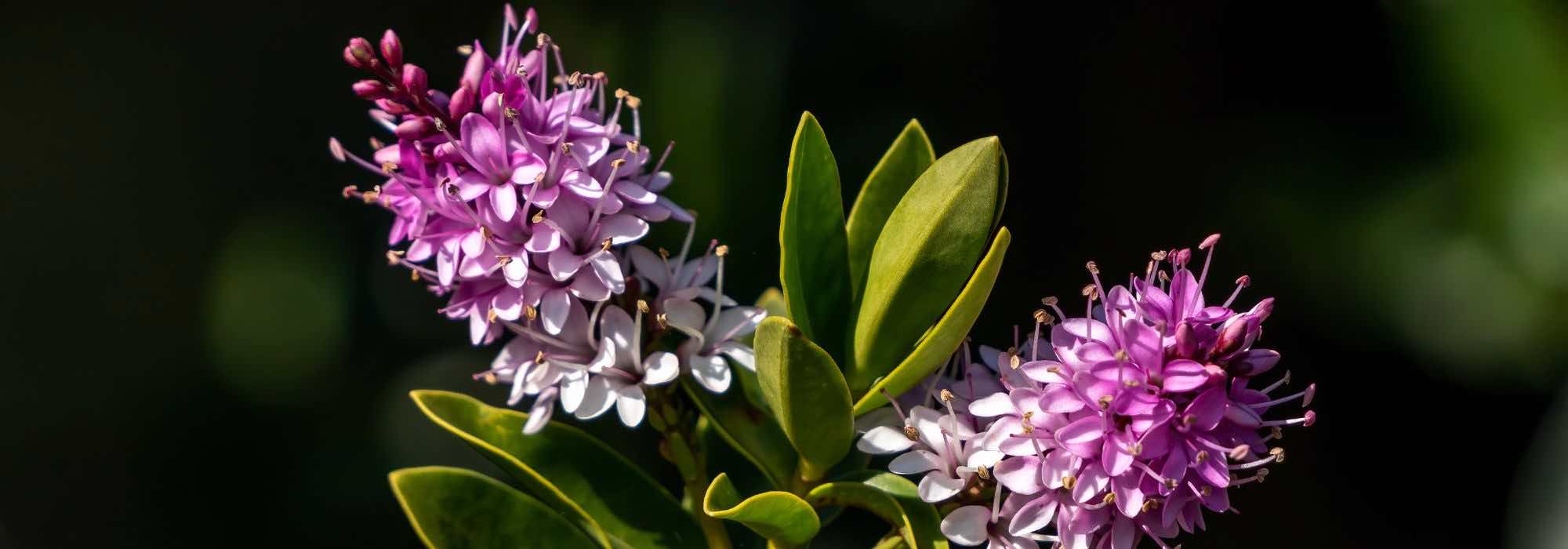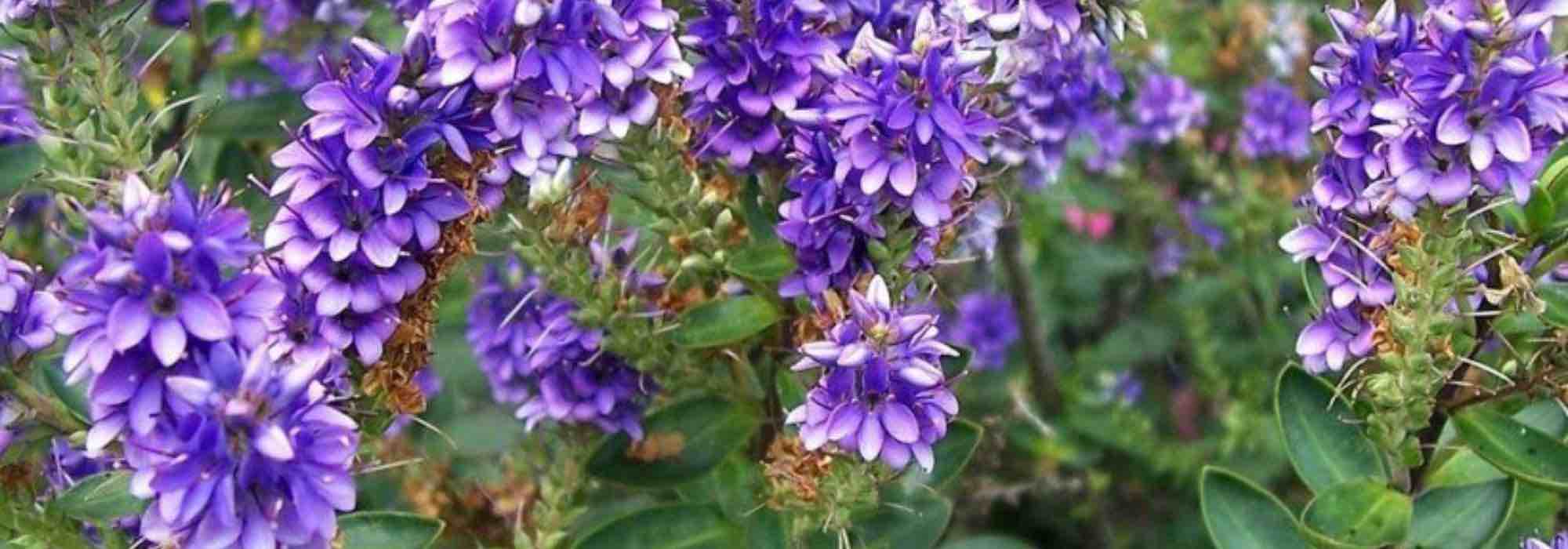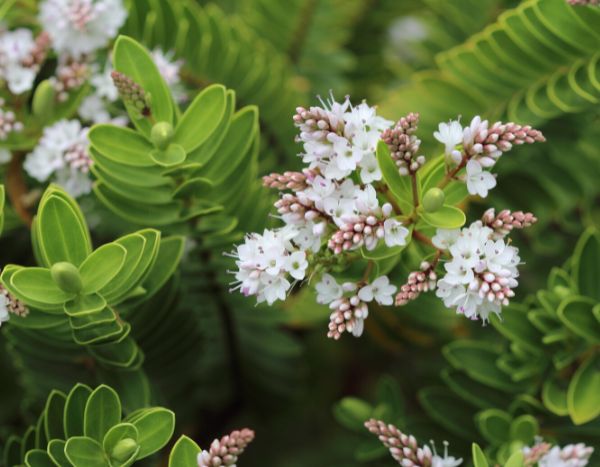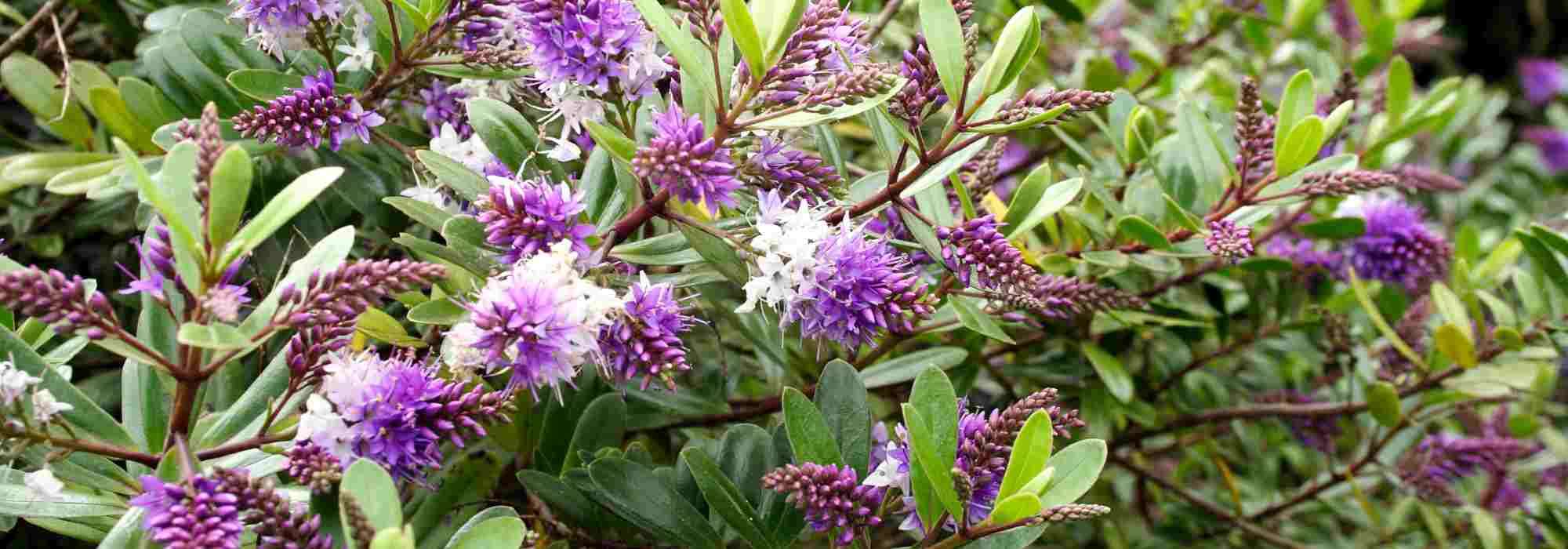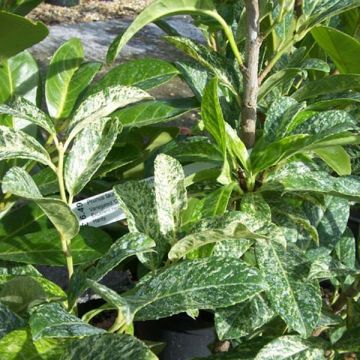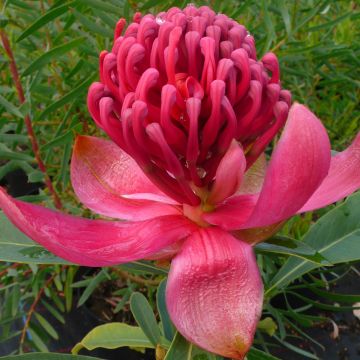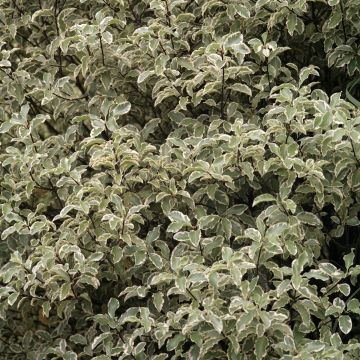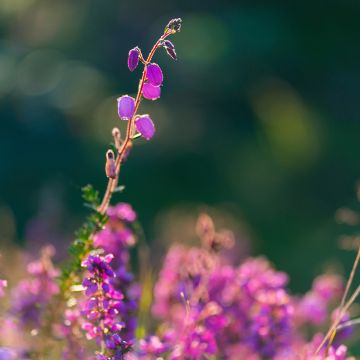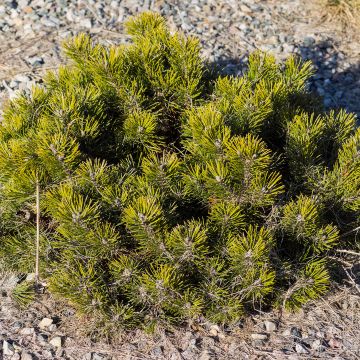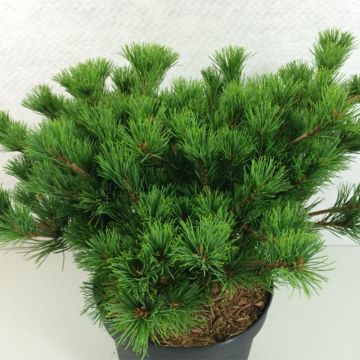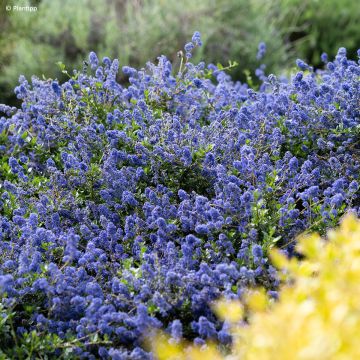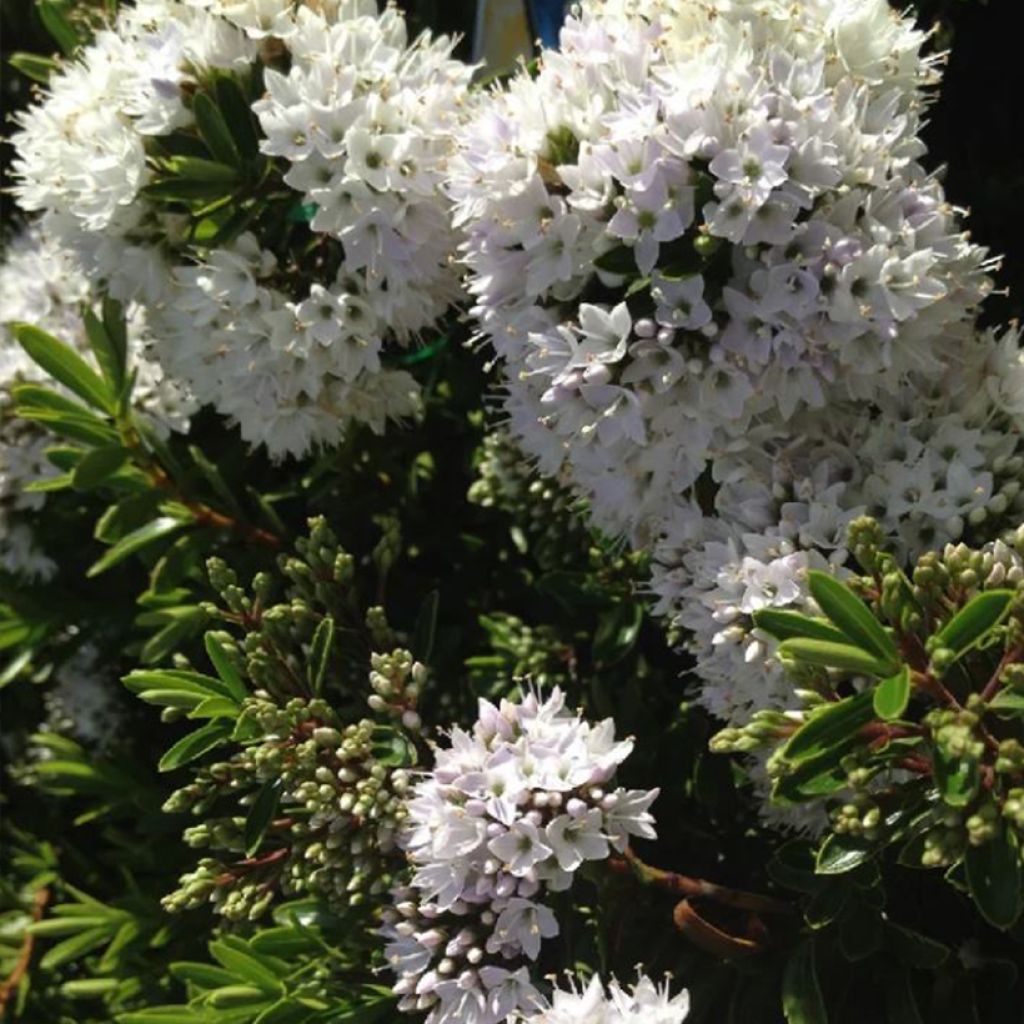

Hebe buxifolia - Box-leaved Hebe
Hebe buxifolia - Box-leaved Hebe
Hebe buxifolia
Box-leaved Hebe, Boxleaf Hebe, Boxwood Hebe
Special offer!
Receive a €20 voucher for any order over €90 (excluding delivery costs, credit notes, and plastic-free options)!
1- Add your favorite plants to your cart.
2- Once you have reached €90, confirm your order (you can even choose the delivery date!).
3- As soon as your order is shipped, you will receive an email containing your voucher code, valid for 3 months (90 days).
Your voucher is unique and can only be used once, for any order with a minimum value of €20, excluding delivery costs.
Can be combined with other current offers, non-divisible and non-refundable.
Home or relay delivery (depending on size and destination)
Schedule delivery date,
and select date in basket
This plant carries a 24 months recovery warranty
More information
We guarantee the quality of our plants for a full growing cycle, and will replace at our expense any plant that fails to recover under normal climatic and planting conditions.
Does this plant fit my garden?
Set up your Plantfit profile →
Description
Hebe buxifolia is a variety of bush veronica that forms a spreading cushion, broader than high, evergreen, with a very ornamental design all year round. Its small glossy leaves are arranged in a cross pattern on the branches, giving it a very recognisable and aesthetic silhouette. At the end of spring, the plant produces white flowers grouped in short spikes at the tips of the branches. One of the hardiest of all (down to -15°C), this veronica can be planted in a border, a rockery, a bed, or in a pot on a terrace in particularly harsh climates.
Hebe, which traditionally belonged to the Scrophulariaceae family, has been reclassified by botanists since 2009 into the Plantaginaceae family, alongside Snapdragon (Antirrhinum) and Foxgloves, which are also transplants... The plants of the Hebe genus were themselves once part of the Veronica genus, the herbaceous veronicas, before being extracted to form a separate group that is indeed quite different. There are about one hundred species of Hebe, most of which are native to New Zealand, with others coming from Tasmania and southern Australia. The first bushy veronica introduced to Europe, Hebe elliptica, was brought back by George Forster during an expedition with the famous Captain Cook. Most of the species currently cultivated on our continent were imported a century later.
Hebe buxifolia, also known by the synonym Hebe odora, grows in both islands that make up New Zealand, at altitudes above 1200 m. This explains why it is one of the hardiest species, tolerating temperatures down to -15°C, or even lower in very good soil and exposure conditions. It is also the fastest-growing species with small leaves... in comparison to others, as bush veronicas are not speed champions. This low bush forms a regular, spreading cushion, usually reaching 50 cm in height and 70 cm in spread, but it can grow up to 1 m and form a much wider mass when it is happy in its location. The dense and compact branches create a very lush vegetation, which is excellent for forming bushy borders. They are adorned with small elongated obovate leaves that taper to a point, measuring only 8 to 12 mm in length. These thin leaves are dark green with a shiny surface on top, while the underside displays a lighter green. Their main originality, which contributes to the beauty of this bush, is that they are aligned in four ranks, giving the branches a very sculptural cross-section.
In June and July, 1.5 to 2.5 cm long spikes of very small flowers, measuring 6 to 8 mm in diameter, appear at the ends of the numerous branches. They are white, sometimes slightly tinged with lilac.
Hebe buxifolia, literally "box-leaved" due to its particular and sculptural foliage, is certainly not the most floriferous of species, but its good hardiness will allow most gardens to welcome it in open ground. In climates that are still too cold, it can be grown in a pot, trimming it occasionally if necessary. Thriving in sunny positions in most soils, it only dislikes stagnant water. Plant it in a bed alongside flowering plants, which will be highlighted by its dark foliage. The charming miniature rose 'Cutie Pie' will thus be enhanced at its feet, with its white and pink flowering renewing throughout the summer on a dome of vegetation only about fifteen centimetres high. Berberis thunbergii 'Tiny Gold' is another dwarf bush, 40 cm in all directions, whose foliage leaning towards yellow will create a superb colour contrast alongside your Hebe. In the background, you can reinforce this contrast by placing a specimen of Cotinus coggygria 'Winecraft Black', a dark purple bush, whose much larger rounded leaves than those of the Berberis and the Hebe will create a surprise effect. Its long-lasting, airy flowering and warm autumn colours will enliven your scene.
Plant habit
Flowering
Foliage
Botanical data
Hebe
buxifolia
Plantaginaceae
Box-leaved Hebe, Boxleaf Hebe, Boxwood Hebe
Hebe odora, Veronica odora, Hebe anomala, Veronica anomala, Veronica buxifolia
Oceania
Other Hebe - Shrubby Veronica
View all →Planting and care
Easy to care for, Hebe buxifolia prefers sunny situations, while tolerating partial shade, and well-drained soils that do not retain too much water. It tolerates salt spray quite well and adapts very well to seaside gardens. Once established, it can withstand short periods of drought. It is one of the hardiest species of the genus, capable of withstanding temperatures down to -12 / -15°C in well-drained soil. In the coldest regions, protect it during the winter or plant it in a pot and bring it into a greenhouse or frost-free conservatory. After flowering, remove the faded inflorescences using a pair of shears. This light trimming will help maintain a compact habit.
Planting period
Intended location
Care
Planting & care advice
This item has not been reviewed yet - be the first to leave a review about it.
Similar products
Haven't found what you were looking for?
Hardiness is the lowest winter temperature a plant can endure without suffering serious damage or even dying. However, hardiness is affected by location (a sheltered area, such as a patio), protection (winter cover) and soil type (hardiness is improved by well-drained soil).

Photo Sharing Terms & Conditions
In order to encourage gardeners to interact and share their experiences, Promesse de fleurs offers various media enabling content to be uploaded onto its Site - in particular via the ‘Photo sharing’ module.
The User agrees to refrain from:
- Posting any content that is illegal, prejudicial, insulting, racist, inciteful to hatred, revisionist, contrary to public decency, that infringes on privacy or on the privacy rights of third parties, in particular the publicity rights of persons and goods, intellectual property rights, or the right to privacy.
- Submitting content on behalf of a third party;
- Impersonate the identity of a third party and/or publish any personal information about a third party;
In general, the User undertakes to refrain from any unethical behaviour.
All Content (in particular text, comments, files, images, photos, videos, creative works, etc.), which may be subject to property or intellectual property rights, image or other private rights, shall remain the property of the User, subject to the limited rights granted by the terms of the licence granted by Promesse de fleurs as stated below. Users are at liberty to publish or not to publish such Content on the Site, notably via the ‘Photo Sharing’ facility, and accept that this Content shall be made public and freely accessible, notably on the Internet.
Users further acknowledge, undertake to have ,and guarantee that they hold all necessary rights and permissions to publish such material on the Site, in particular with regard to the legislation in force pertaining to any privacy, property, intellectual property, image, or contractual rights, or rights of any other nature. By publishing such Content on the Site, Users acknowledge accepting full liability as publishers of the Content within the meaning of the law, and grant Promesse de fleurs, free of charge, an inclusive, worldwide licence for the said Content for the entire duration of its publication, including all reproduction, representation, up/downloading, displaying, performing, transmission, and storage rights.
Users also grant permission for their name to be linked to the Content and accept that this link may not always be made available.
By engaging in posting material, Users consent to their Content becoming automatically accessible on the Internet, in particular on other sites and/or blogs and/or web pages of the Promesse de fleurs site, including in particular social pages and the Promesse de fleurs catalogue.
Users may secure the removal of entrusted content free of charge by issuing a simple request via our contact form.
The flowering period indicated on our website applies to countries and regions located in USDA zone 8 (France, the United Kingdom, Ireland, the Netherlands, etc.)
It will vary according to where you live:
- In zones 9 to 10 (Italy, Spain, Greece, etc.), flowering will occur about 2 to 4 weeks earlier.
- In zones 6 to 7 (Germany, Poland, Slovenia, and lower mountainous regions), flowering will be delayed by 2 to 3 weeks.
- In zone 5 (Central Europe, Scandinavia), blooming will be delayed by 3 to 5 weeks.
In temperate climates, pruning of spring-flowering shrubs (forsythia, spireas, etc.) should be done just after flowering.
Pruning of summer-flowering shrubs (Indian Lilac, Perovskia, etc.) can be done in winter or spring.
In cold regions as well as with frost-sensitive plants, avoid pruning too early when severe frosts may still occur.
The planting period indicated on our website applies to countries and regions located in USDA zone 8 (France, United Kingdom, Ireland, Netherlands).
It will vary according to where you live:
- In Mediterranean zones (Marseille, Madrid, Milan, etc.), autumn and winter are the best planting periods.
- In continental zones (Strasbourg, Munich, Vienna, etc.), delay planting by 2 to 3 weeks in spring and bring it forward by 2 to 4 weeks in autumn.
- In mountainous regions (the Alps, Pyrenees, Carpathians, etc.), it is best to plant in late spring (May-June) or late summer (August-September).
The harvesting period indicated on our website applies to countries and regions in USDA zone 8 (France, England, Ireland, the Netherlands).
In colder areas (Scandinavia, Poland, Austria...) fruit and vegetable harvests are likely to be delayed by 3-4 weeks.
In warmer areas (Italy, Spain, Greece, etc.), harvesting will probably take place earlier, depending on weather conditions.
The sowing periods indicated on our website apply to countries and regions within USDA Zone 8 (France, UK, Ireland, Netherlands).
In colder areas (Scandinavia, Poland, Austria...), delay any outdoor sowing by 3-4 weeks, or sow under glass.
In warmer climes (Italy, Spain, Greece, etc.), bring outdoor sowing forward by a few weeks.






























